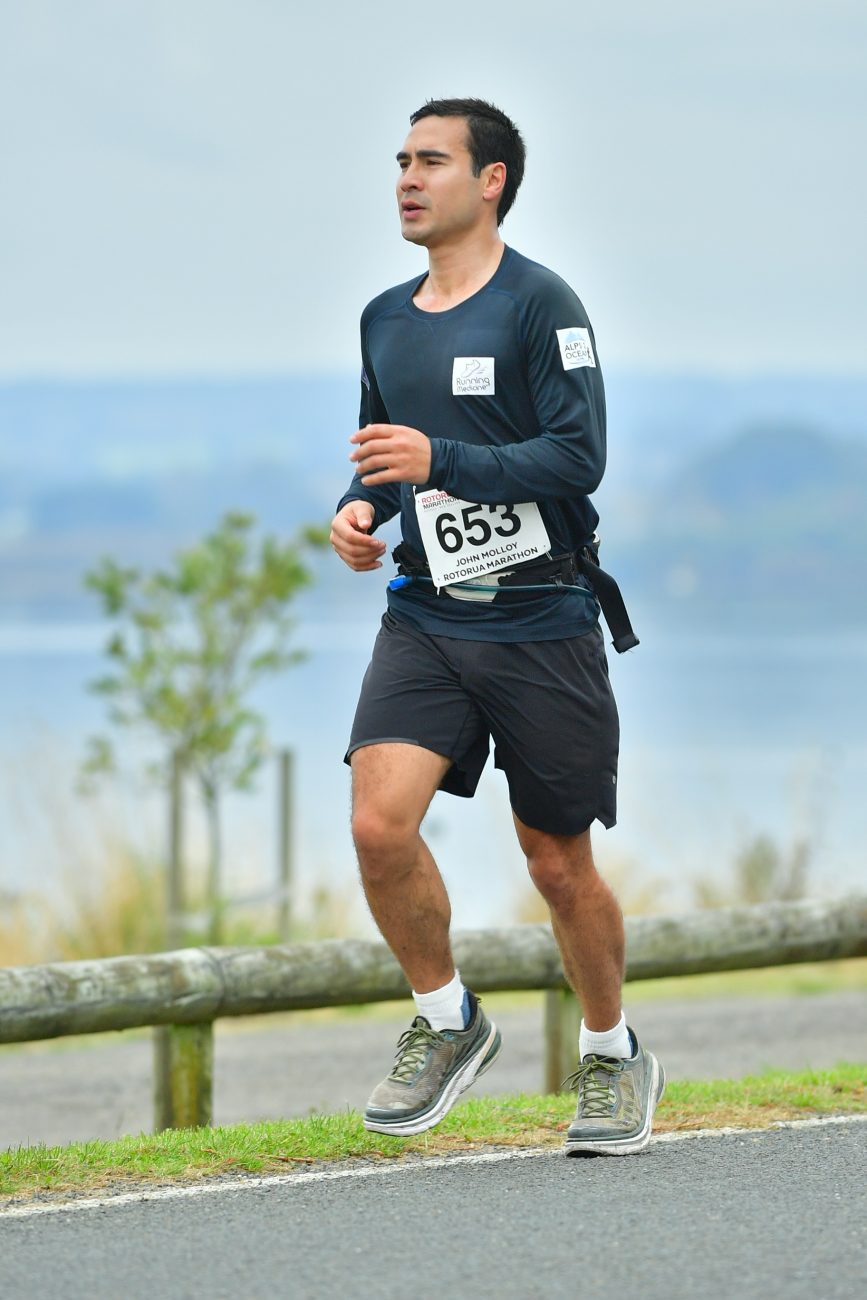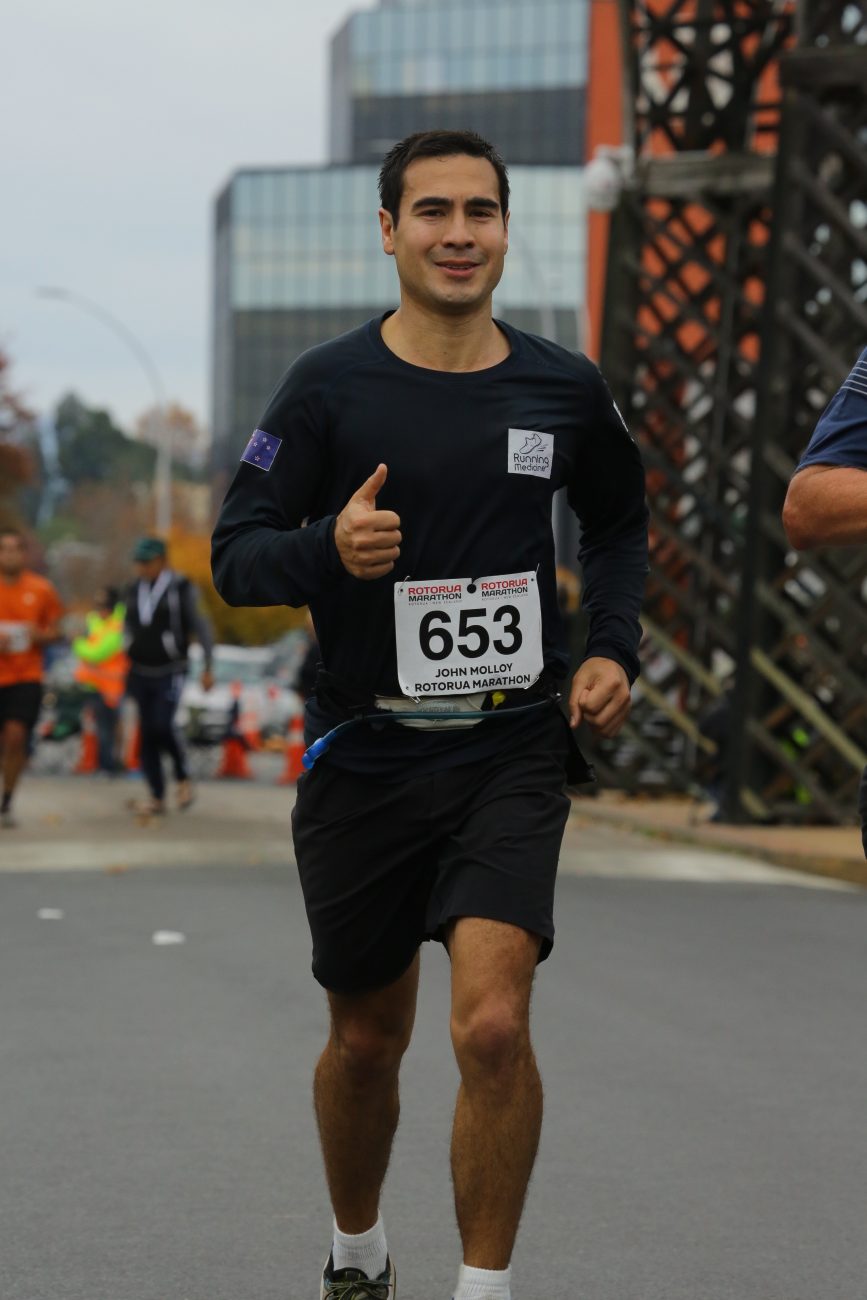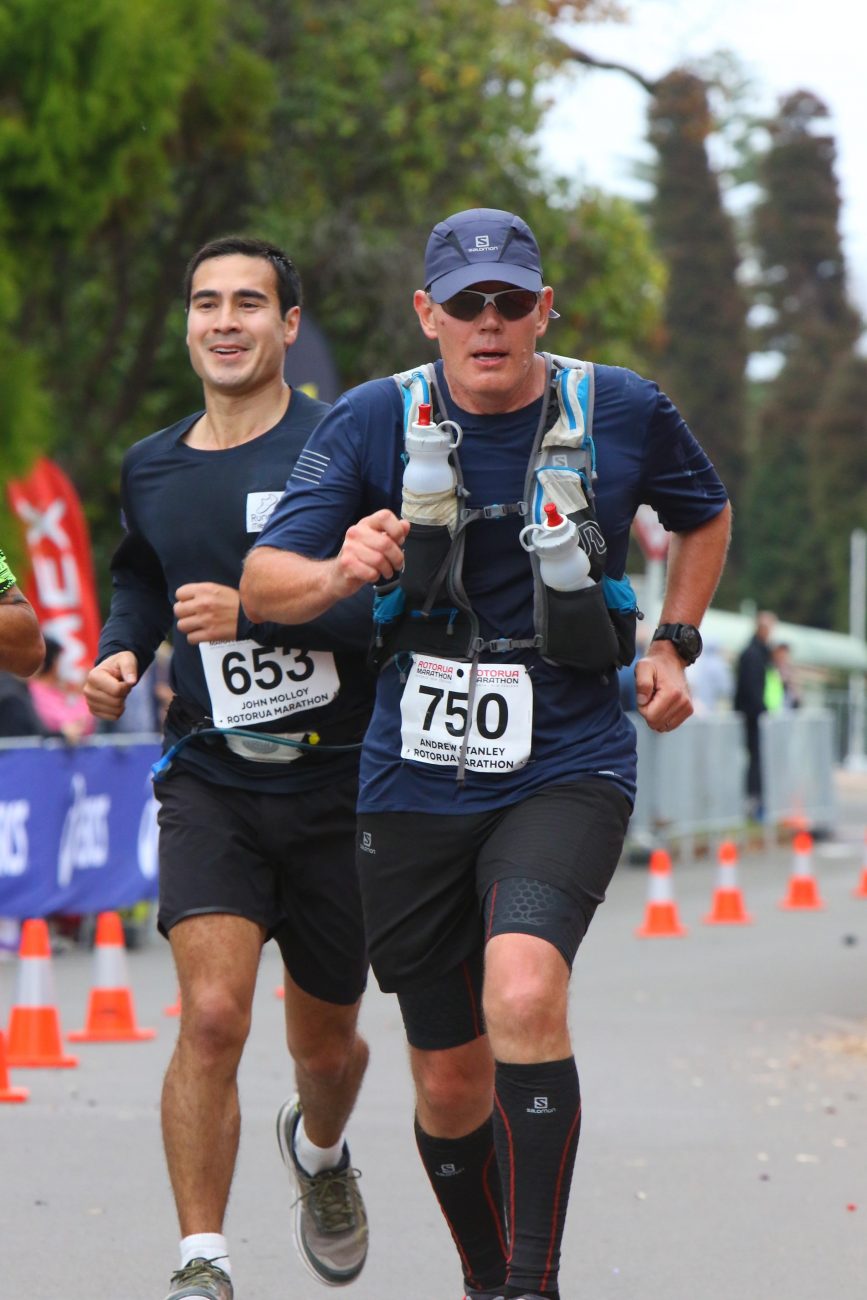
Rotorua Marathon 2018:
Marathon # 82
Date:
May 05, 2018Some marathons I enjoy more than others and the Rotorua marathon is one of those. Having grown up in Rotorua, most of my running apprenticeship was served in this small town. Many hours have been spent running in the Redwood Forest and along the Blue and Green lakes. Even though my first marathon was in Dunedin, my love for marathon running was born in Rotorua. This year was the 54th running of the Rotorua marathon and my 11th start at this famed event. Affectionately referred to as the “People’s Marathon”, the Rotorua marathon is a favourite of mine due to its simple course design and long finishing cut off time. The long cut off time invariably attracts all shapes, sizes, and abilities which usually makes the Rotorua marathon the most participated marathon in New Zealand in any given year. As I line up at the start line at the picturesque Government Gardens, I reminisce the many highs and lows I’ve had during this marathon. The Rotorua marathon is a tough run and I’ve had my fair share of ‘hitting the wall’ over the years. The marathon begins with a customary welcome haka from the local Te Arawa kapa haka group. I then head past the lawn bowl greens and through the Prince’s Gate Arches towards Lake Rotorua. Ready for another 42.2km loop around the lake.

Winter is coming. On ‘wall watch’ along the back of Lake Rotorua near Hamurana Springs.
Having run the Rotorua marathon a few times now, you begin to know the course well. You know where to push and where to conserve. I set off at a reasonably steady but comfortable pace accompanied by my friend Dr Andrew Stanley. A lot of the time whilst running, I am on ‘wall watch’. Some competitive runners actually seek the wall. For them, not hitting the wall means they aren’t running hard enough. Myself, I try to avoid the wall if possible. This is usually through a combination of smart pacing and adequate hydration and nutrition. I see myself as running beside the wall or like a boxer constantly jabbing to keep it at bay. The reality is, ‘hitting the wall’ really takes it out of you. It takes a lot of physical and mental strength to recover from an encounter with the wall. And sometimes, no matter how good or elusive you are, the wall will eventually find you. Many allied health professionals have tried to explain the wall. Nutritionists will cite low glucose or glycogen depletion. Exercise physiologists will quote poor training leading to fatigue and exhaustion. Psychologists will probably say that the wall is a mental construct that is all in your head. In my opinion, the wall is best explained by the ‘Central Governor Theory’ proposed by South African Sport & Exercise Physician, Dr Tim Noakes. This theory proposes that the body has an innate ability to protect itself during exercise. The ‘central governor’ is actually the brain which is influenced by your past experiences. The brain is constantly receiving information from different parts of your body such as your cardiorespiratory, neuromuscular, thermoregulatory, and gastrointestinal systems whilst exercising. The brain assimilates all of this information and then dictates a ‘safe pace’ for you to continue exercising. The brain will stop you before you do any serious or permanent damage to yourself. The wall therefore, is a protective mechanism of the brain to slow you down. Typically the wall is brought on by inappropriate pacing (e.g. going too fast for too long), maintaining a pace that does not take into account the environmental temperatures your body is use to (e.g. running a marathon in a desert), or simply running beyond a distance you have never run before (e.g. the last 12km in your first marathon). In order to pass the wall, you must somehow convince your brain that it is safe for you to continue exercising (if you have not already convinced it prior with satisfactory pre-race training). Often this involves a period of slowing down, cooling off, or optimising your hydration and nutrition. A positive mind set is also helpful. Hitting the wall is a negotiation with your central governor. For some, it is a fierce battle.

Feeling good heading towards the finish line 3 hours and 50 minutes later
As I run along the back of Lake Rotorua through Hamurana Springs and the hills of Mourea, I know I am approaching ‘wall country’. The 30km mark of the Rotorua marathon is just past the Rotorua 3D maze. It is usually around this point that runners start to acquaint themselves with their own walls. I continue to run beside my wall. Constantly jabbing, keeping it at bay. As you run past the Rotorua Airport and down Vaughan Road, you see runners battling with their invisible walls. The duals are intense and deeply personal. The mind coercing the body to slow down. If you do meet your wall, you must embrace this challenge. Believe ‘you can’ in order to convince your brain ‘you will’. Take solace in knowing that every wall weakens with every step forward. The closer you get to the finish line, the smaller the wall becomes. Also, every wall (no matter how formidable) has a door. This door is full of opportunity and leads to infinite growth. Open your doors. Conquer your walls. Running is medicine. Join me at my next blog, the Mt Oxford Odyssey mountain marathon in mid May. This sounds like a tough one!

Walls can come in physical forms. Dr Andrew Stanley (right) accelerating at the finish line.
